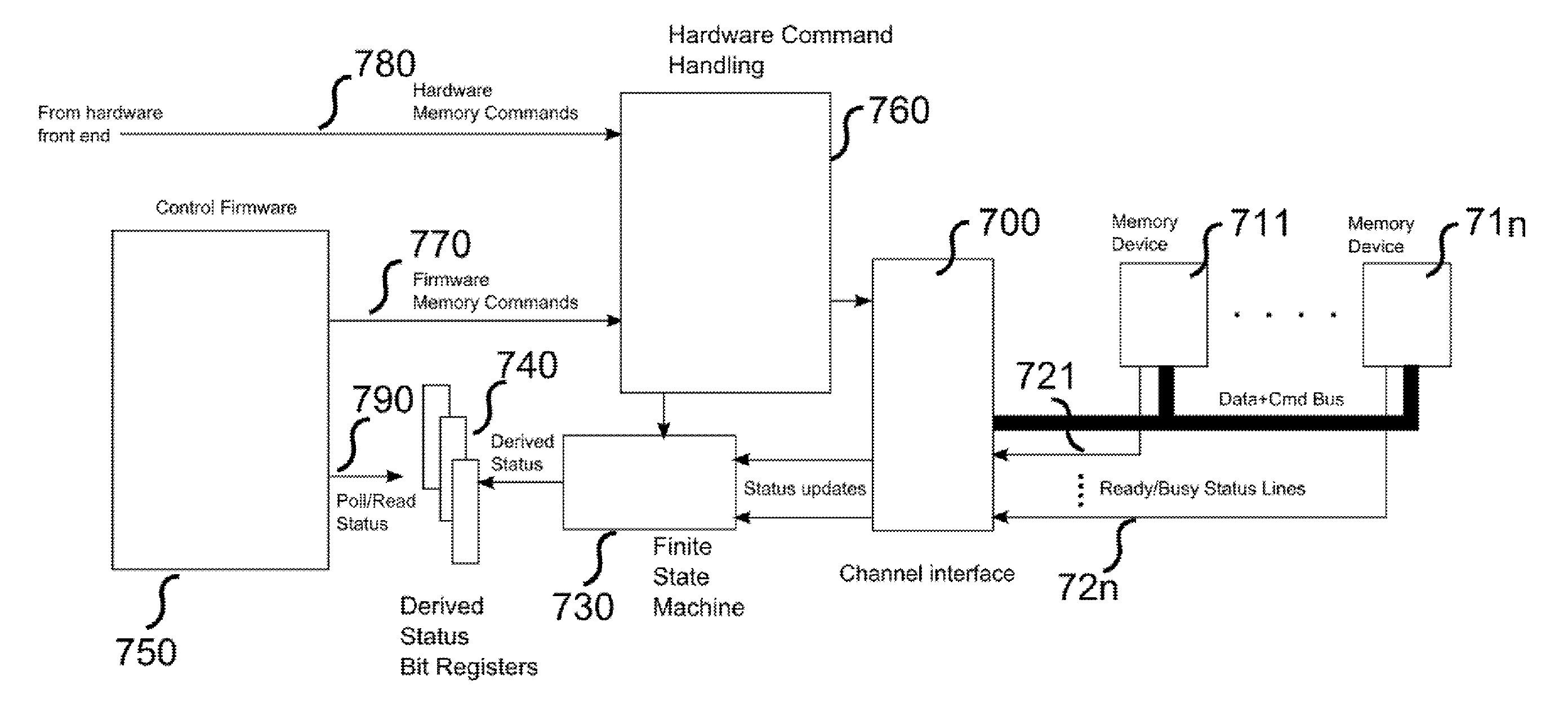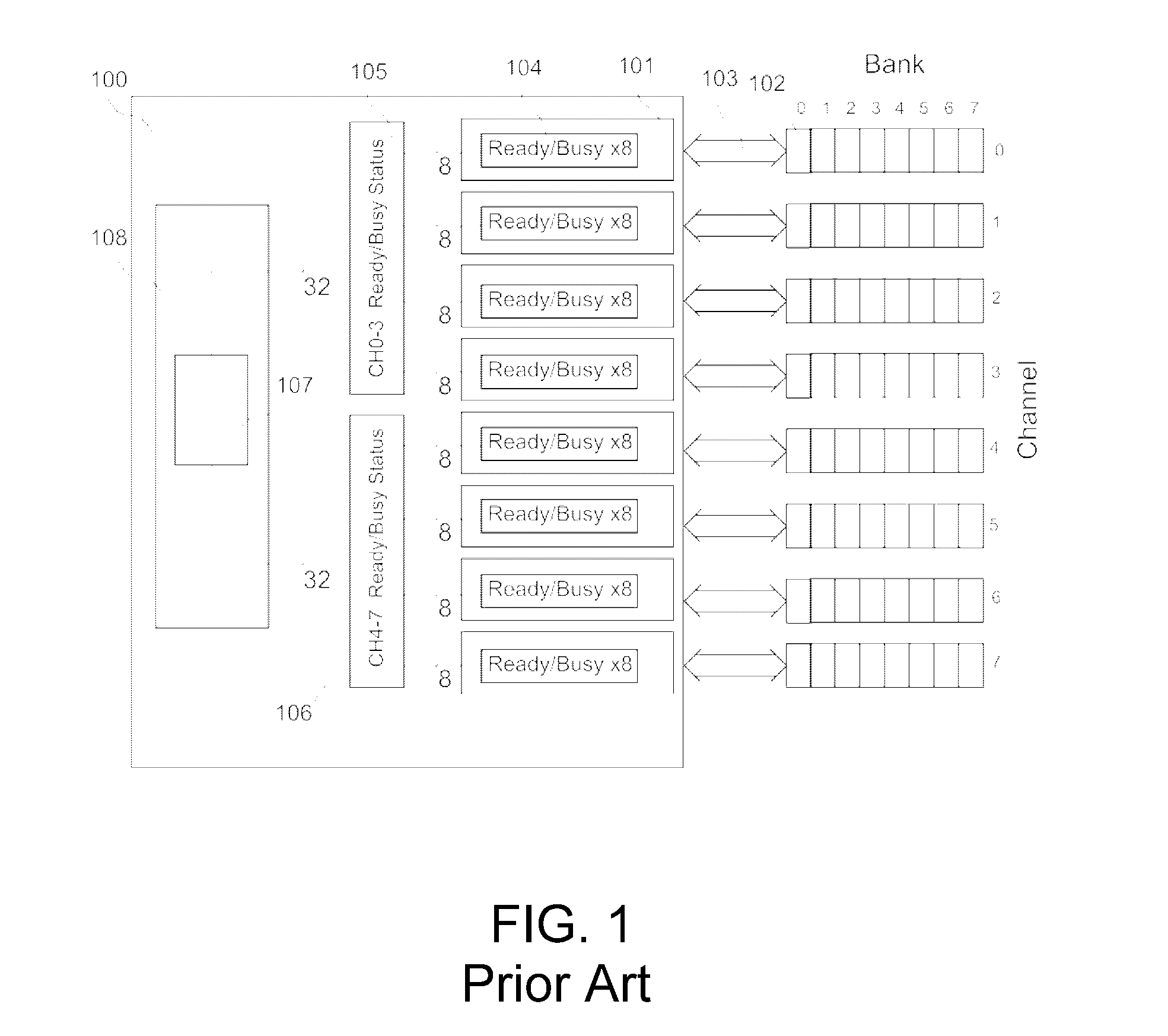System and method for polling the status of memory devices
- Summary
- Abstract
- Description
- Claims
- Application Information
AI Technical Summary
Benefits of technology
Problems solved by technology
Method used
Image
Examples
Embodiment Construction
[0024]Certain commands to a non-volatile memory device can only be issued one at a time. For instance, there are commands which, once they are issued and being processed must complete before a new command can be issued to that device. There are also commands which, once they are issued and being processed, can allow only certain other commands to be issued. New commands may be issued to other devices on the same channel, but if another command arrives for a device that is currently processing a command, it may have to wait and be placed in a FIFO (First In, First Out) queue, waiting for the currently processing command to complete before the next command in the queue can be issued.
[0025]The state of the memory device which indicates whether it is currently processing a command is the Ready / Busy# status, which can be either a physical status output pin on the device, or in data returned after issuing a status command. Simply polling the status regularly indicates that a device is rea...
PUM
 Login to View More
Login to View More Abstract
Description
Claims
Application Information
 Login to View More
Login to View More - R&D
- Intellectual Property
- Life Sciences
- Materials
- Tech Scout
- Unparalleled Data Quality
- Higher Quality Content
- 60% Fewer Hallucinations
Browse by: Latest US Patents, China's latest patents, Technical Efficacy Thesaurus, Application Domain, Technology Topic, Popular Technical Reports.
© 2025 PatSnap. All rights reserved.Legal|Privacy policy|Modern Slavery Act Transparency Statement|Sitemap|About US| Contact US: help@patsnap.com



